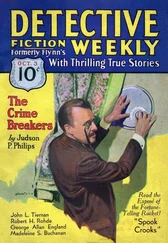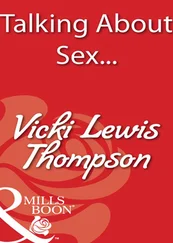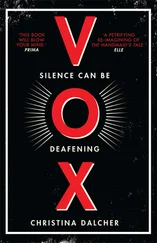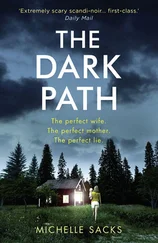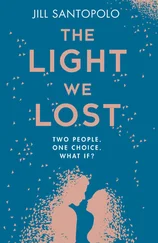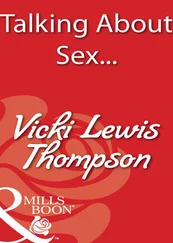Part of the attraction of the story is this satisfaction in solving the mystery. The importance of this differs with the individual reader. Some follow the clues assiduously and at the end feel the same small triumph that they do after a successful game of chess. Others find more interest in the characterisation, the setting, the writing or the theme. Certainly if the mystery were dominant no one would wish to reread old favourites, and many of us find that, reading in bed, the comfort and reassurance of a beloved mystery is the pleasantest prelude to falling asleep. And without wading too deeply into the pools of psychological analysis, there can be no doubt that the detective story produces a reassuring relief from the tensions and responsibilities of daily life; it is particularly popular in times of unrest, anxiety and uncertainty, when society can be faced with problems which no money, political theories or good intentions seem able to solve or alleviate. And here in the detective story we have a problem at the heart of the novel, and one which is solved, not by luck or divine intervention, but by human ingenuity, human intelligence and human courage. It confirms our hope that, despite some evidence to the contrary, we live in a beneficent and moral universe in which problems can be solved by rational means and peace and order restored from communal or personal disruption and chaos. And if it is true, as the evidence suggests, that the detective story flourishes best in the most difficult of times, we may well be at the beginning of a new Golden Age.
8. Today and a Glimpse of Tomorrow
The detective novel… is aimed above all at the intelligence; and this could constitute for it a title to nobility. It is in any case perhaps one of the reasons for the favour it enjoys. A good detective story possesses certain qualities of harmony, internal organisation and balance, which respond to certain needs of the spirit, needs which some modern literature, priding itself on being superior, very often neglects.
Régis Messac, Le “detective novel” et l’influence de la pensée scientifique (1929)
THE CLASSICAL detective story is the most paradoxical of the popular literary forms. The story has at its heart the crime of murder, often in its most horrific and violent form, yet we read the novels primarily for entertainment, a comforting, even cosy relief from the anxieties, problems and irritations of everyday life. Its prime concern-indeed its raison d’être -is the establishment of truth, yet it employs and glories in deceit: the murderer attempts to deceive the detective; the writer sets out to deceive the reader, to make him believe that the guilty are innocent, the innocent guilty; and the better the deception the more effective the book. The detective story is concerned with great absolutes-death, retribution, punishment-yet in its clue-making it employs as the instruments of that justice the trivial artefacts and incidents of everyday life. It affirms the primacy of established law and order, yet its attitude to the police and the agencies of that law has often been ambiguous, the brilliance of the amateur detective contrasted with dull official orthodoxy and unimaginative incompetence. The detective story deals with the most dramatic and tragic manifestations of man’s nature and the ultimate disruption of murder, yet the form itself is orderly, controlled, formulaic, providing a secure structure within which the imaginations of writer and reader alike can confront the unthinkable.

“Did Esme Draycott really go to her lover that night? Is Selwyn Plunkett dead or alive and well in Peru? Was Melanie Frayle asleep or drugged? Who was the man in the green Lagonda? Stay with us for Part Two, after the break.”
This paradox, true of the books of the Golden Age, remains true today, although perhaps to a lesser extent. But the detective story has changed since, as a teenager, I saved my pocket-money to buy the new book by Dorothy L. Sayers or Margery Allingham. It could hardly be otherwise. That was over seventy years ago, decades which have seen the Second World War, the atomic bomb, major advances in science and technology which have outstripped our ability to control them, great movements of a world population which threatens our resources of food and water, international terrorism and a planet at risk of becoming uninhabitable. Beside these momentous changes, no human activity, even popular art in any medium, can remain unaffected.
The way in which the typescript is physically produced has also changed dramatically. My secretary, Joyce McLennan, has been typing my novels for thirty-three years and recently we have been reminiscing about those early days when she used a manual typewriter, worked at home because she had young children, and I dictated onto a tape which her husband collected on his way home from work. She reminds me that since I also was working, the tape was often concealed in a large china pig hidden by the side gate. We then advanced to an electric typewriter, and then to a word processor, which seemed the acme of scientific progress. I still like to write by hand, but now I dictate each chapter to Joyce, who puts it onto the computer, printing it out in sections for me to revise. Finally it is sent simultaneously to my publisher, agent and editor through cyberspace, a system which I can neither operate nor understand. Many of my friends-perhaps the majority-have for years produced their books directly on the computer, but no machine made by man is user-friendly to me.
Publishing methods have also changed. New technology means that books can now be produced very quickly to meet demand. Small independent booksellers are finding it more and more difficult to compete with Internet selling. The advent and increasing popularity of the e-book has brought a dramatic change. For those of us who love books-the smell of the paper, the design, the print and the type, the feel of the book as we take it down from the shelf-reading by machine seems an odd preference. But if we accept that what is important is the text, not the means by which it comes to the reader’s eyes and brain, it is easier to understand the popularity of this new resource, particularly for a generation which has become accustomed to technology from childhood. But how far, if at all, these changes will actually affect the variety and type of fiction produced remains to be seen.
What is surprising is not that the detective story has altered but that it has survived, and that what we have seen since the interwar years has been a development, not a rejection, followed by renewal. Crime fiction today is more realistic in its treatment of murder, more aware of scientific advances in the detection of crime, more sensitive to the environment in which it is set, more sexually explicit and closer than it has ever been to mainstream fiction. The difference between the crime novel in all its variety and detective fiction has become increasingly fudged, but there still remains a clear division between the generality of crime novels and the conventional detective story, even at its most exciting, which continues to be concerned with each individual death and the solving of the mystery through patient intelligence rather than physical violence and prowess.
I find it interesting that the detective hero, originated by Conan Doyle, has survived and is still at the heart of the story, like a secular priest expert in the extraction of confession, whose final revelation of the truth confers a vicarious absolution on all but the guilty. But, not surprisingly, he has changed. Because of the growing importance of realism for writers and readers, in part arising from the comparative reality of television series, the professional detective has largely taken over from the amateur. What we have are realistic portrayals of human beings undertaking a difficult, sometimes dangerous, and often disagreeable job, beset with the anxieties common to humanity: professional jealousies, uncooperative colleagues, the burden of bureaucracy and difficulties with wives or children. An example of the successful professional detective at peace with his job is Ruth Rendell’s Inspector Reginald Wexford, who, so far from being a disillusioned maverick, is a hard-working, conscientious, liberal-minded police officer, happily married to Dora, who provides for him that stable background which helps to buttress him against the worst traumas of his daily work.
Читать дальше



